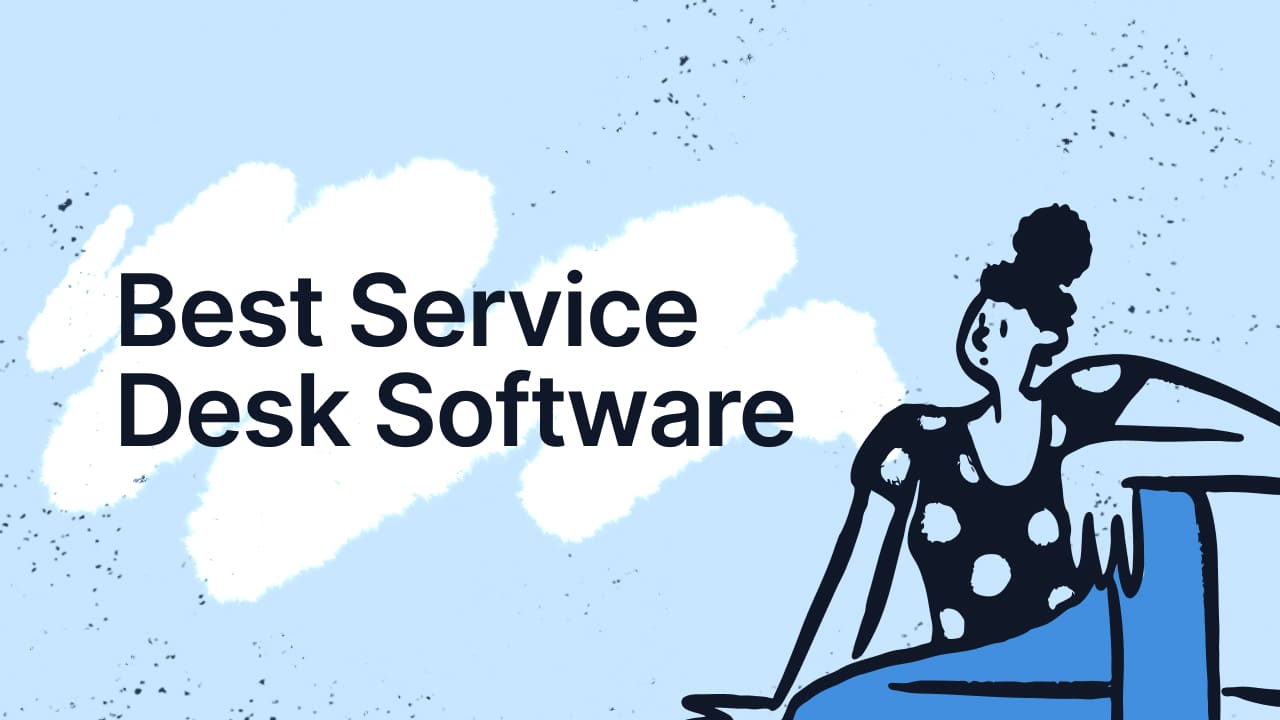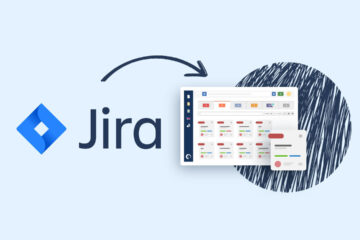Investing in service desk software is essential for a service-focused organization looking to provide high-quality IT support. A solid IT Service Management (ITSM) strategy must be supported by a robust tool that automates workflows and improves communication to enhance end-user engagement and simplify the support agent’s job. In this guide, we will explore key features to consider when choosing a service desk solution and compare fourteen top picks.
When selecting the right IT service desk software, it is crucial to involve a team to ensure a comprehensive view of requirements and technical specifications. Consider factors such as scope, requirements gathering, procurement, technical requirements, speed of implementation, go-live support, and ongoing support. It is also important to assess the vendor’s ability to assist in improving ITSM practices, the tool’s configurability, upgrade path management, vendor’s evolution with the market, and service desk solution features and capabilities.
Must-have features of service desk software include self-service options, Incident and Problem Management, automation, reporting, and AI capabilities. Additionally, essential Service Management solution capabilities include No-Code/Low-Code functionality for easier administrative tasks and configuration settings. Choose a service desk tool that meets these requirements to streamline IT Service Management and improve service performance, customer satisfaction, and risk reduction. Other vendors offer codeless products that are only available as cloud or SaaS-based solutions, limiting installation options. A truly codeless product should be fully customizable without the need for Java, C++, or Visual Basic, reducing costs, delivery time, and downtime during maintenance.
Modern UX is crucial as customers expect an experience similar to Amazon, Google, and Facebook. API integrations are essential for linking ITSM tools with third-party applications like HR systems for seamless data capture and ticket management.
Automation, AI, and bots enhance self-service and user experience by providing solutions based on data models and previous interactions. Incident, request, and change request forms should be user-friendly and easy to engage with. Reusable workflows simplify Enterprise Service Management by deploying one workflow throughout the organization.
Continuous deployment and pull-based delivery mechanisms help manage updates effectively. Sending a service desk RFP to vendors can provide insights into available features and capabilities for your organization.
Choosing between cloud and on-premise service desk tools depends on factors like control, ownership, data protection, installation, maintenance, and costs. Cloud solutions offer flexibility, scalability, lower costs, better performance, and automated updates.
The best service desk software includes solutions like InvGate Service Desk, Cherwell/Ivanti, and Hornbill, offering features such as ITAM, ESM, codeless configuration, automation, and customization options. Each solution has its unique advantages and alternatives to consider for your organization’s IT service management needs. It offers “elastic licensing” for easy addition or removal of licenses and a configurable CIO dashboard with real-time status information and emerging trends.
Advantages of Hornbill
– Cloud-based ITSM eliminates the need for app management or hosting.
– Codeless configuration for easy customization.
– Strong automation capabilities.
ManageEngine overview
ManageEngine provides service and asset management capabilities to enterprises of all sizes. Key features include ITSM workflows, smart automation, integration with various applications, and ESM capabilities.
Advantages of ManageEngine
– Customizable self-service portal with a service catalog.
– Three-tier plan options for customers.
– Support for project management tasks.
SysAid overview
SysAid’s cloud service desk solution is ideal for small and medium-sized organizations, focusing on service automation. It offers help desk and asset management capabilities, third-party integrations, and quick implementation.
Advantages of SysAid
– Out-of-the-box Request, Change, and Problem Management capabilities.
– Strong focus on Incident, Problem, Request, and Change Management.
Freshservice overview
Freshservice is a cloud-based ITSM and service desk solution for SMBs, mid-market, and larger organizations. It emphasizes robust automation, rapid deployment, and monthly updates.
Advantages of Freshservice
– Automation and virtual agents for efficiency.
– Focus on Incident, Problem, Change, Release, Asset, and Configuration Management.
– Intuitive self-service options.
BMC Helix overview
BMC Helix ITSM offers a suite of ITSM tools with integrations to other BMC tools and built-in ITAM. It is popular among global brands and emphasizes ITIL alignment.
Advantages of BMC Helix
– Long track record of ITSM service provision.
– Operations Management for monitoring and configuration.
– Strong alignment with ITIL 4 and cognitive email analysis.
ServiceNow overview
ServiceNow’s ITSM bundle on the ServiceNow Now Platform includes modules for Incident, Problem, Change, Release, and Configuration Management. It is known for being an industry-leading ITSM solution.
Advantages of ServiceNow
– Platform features and pre-built ESM solutions.
– Automation and AI investments.
– Experience-focused design.
Marval overview
Marval is an ITIL-aligned service desk tool available as on-premises or SaaS. It focuses on Enterprise Service Management and utilizes automation and machine learning.
Advantages of Marval
– Use of automation and machine learning for routine interactions.
– Combines AI, ML, and robotic process automation with ITSM.
– Recent investments in AI-assisted problem management.
Jira Service Management overview
Jira Service Management provides out-of-the-box support for Service Requests, Incident, Problem, and Change Management. It integrates with Slack and Trello and offers a mobile app.
Advantages of Jira Service Management
– Intuitive self-help portal.
– Free option for up to three agents for testing purposes.
TOPdesk overview
TOPdesk’s ITIL-aligned solution offers on-premises and SaaS deployments without coding. It supports ESM and computer-aided facilities management.
Advantages of TOPdesk
– Configured to individual requirements.
– Well suited for ESM.
– Supplier management capabilities.
EasyVista overview
EasyVista’s ITSM solution targets enterprise organizations with codeless configuration, smart automation, and out-of-the-box ITIL processes. It emphasizes maturity over complexity.
Advantages of EasyVista
– Strong customer relationships.
– Flexibility in customization.
– Investments in Knowledge Management.
SolarWinds Helpdesk overview
SolarWinds Helpdesk provides a simple, ITIL-compliant service desk solution suitable for smaller organizations. It offers a free trial for 14 days.
Advantages of SolarWinds Helpdesk
– Efficient ticketing system.
– Centralized knowledge base.
– Integration with AD and LDAP.
HaloITSM overview
HaloITSM is an ITSM-aligned service desk tool available as SaaS or on-premises. It offers a user-centric interface and a solid ticketing system.
Advantages of HaloITSM
– User-centric self-service portal.
– Solid ticketing system.
– CMDB for identifying systemic issues before major incidents occur.
Overall benefits of service desk software include a single source of truth, improved incident tracking, self-service options, transparency, knowledge base functionality, and customer-focused service. It’s essential to consider the market options when selecting the right ITSM tool for your organization. When looking for a service desk tool, it’s important to involve a team to ensure you get the requirements right and make informed decisions. Consider how you will use the software – whether on-premises or SaaS, free or full version, or open-source. Key functionalities to look for include Self-service, Incident, and Request Management.
The key message is to keep moving forward and stay informed on industry best practices. Make sure to choose the best tool to support your organization and its people. If you’re interested in checking out a service desk solution, you can request a free 30-day trial to explore the features it offers.
Service desk software acts as a central point of contact between IT and the organization, allowing end-users to log incidents and service requests for prompt and effective responses. Help desk and service desk are similar, with the latter being a more strategic approach to managing IT services.
While free service desk software may be tempting, it often comes with limitations in terms of users, functionality, and security. Open-source service desk software, on the other hand, allows users to modify and distribute the software freely but may come with challenges in terms of usability, compatibility, and security risks.
When creating engaging content for a WordPress platform, ensure to preserve the original HTML tags, headers, and key points while seamlessly integrating the new content for a unique and direct conversation with readers.



